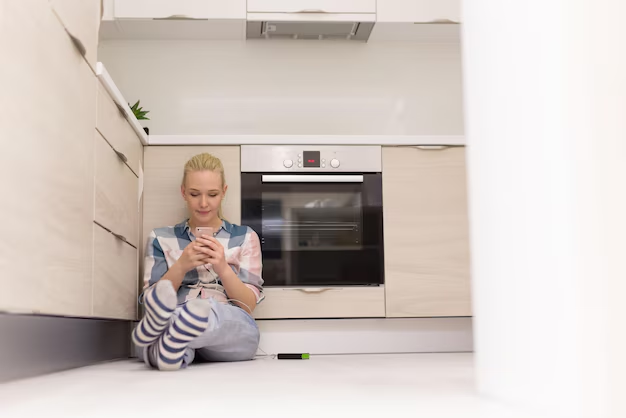How Long Can Your Refrigerator Really Be Unplugged? Essential Insights for Food Storage and Safety
In a world where convenience and efficiency are valued more than ever, knowing how to handle your refrigerator during power outages or while you’re away is crucial. This guide sheds light on a common concern: how long can a refrigerator be unplugged before food safety becomes a real issue? Whether you're planning a short trip, moving, or dealing with an unexpected power outage, understanding the implications of leaving your fridge unplugged can save you money, prevent food waste, and ensure household safety.
Understanding the Basics of Refrigerator Functionality
How Refrigerators Keep Food Safe
Refrigerators work by maintaining a cold internal environment that slows down the growth of bacteria. The optimal temperature range for a fridge is between 37°F (3°C) and 40°F (4°C), which helps keep perishable items safe for extended periods.
- Compressor Function: The refrigerator compressor circulates refrigerant, which removes heat and maintains the internal cold temperature.
- Insulation: A fridge is designed with insulating materials that help retain cold air, slowing the warming process when unplugged.
Power Outage or Unplugging: What's the Difference?
While a power outage is unexpected, unplugging a fridge typically happens under controlled circumstances like moving or cleaning. However, both scenarios pose similar challenges regarding temperature maintenance.
- During a power outage, doors may be opened inadvertently, allowing warm air to enter.
- When unplugged under control, doors can remain closed to minimize temperature increase.
How Long Can a Refrigerator Be Unplugged?
Critical Timeframes for Food Safety
In general, a refrigerator can keep food safely cool for around 4 hours if unopened, while a full freezer can maintain its temperature for approximately 48 hours if the door remains closed.
Key Factors Influencing Timeframes
- Initial Temperature: A colder starting point delays the warming process.
- Contents: A full fridge or freezer retains cold longer due to the thermal mass of stored items.
- External Temperature: Higher outside temperatures accelerate warming.
- Condition of Seals: Well-maintained door seals prevent warm air from entering.
Risk Indicators
If the fridge temperature rises above 40°F (4°C) for more than 4 hours, the safety of perishable food becomes questionable. Long exposure above this temperature increases the risk of bacterial growth.
Steps to Mitigate Risks
- Keep doors shut: This is crucial for maximizing time during which the internal temperature stays within safe limits.
- Group items together: This helps maintain coolness due to shared thermal mass.
- Frozen water bottles: Placing these in the fridge or freezer can extend the cooling period.
Planning for Interruptions: Practical Tips and Tricks
Before Unplugging
- Plan: Schedule unplugging during cooler periods or when the contents are minimal.
- Prepare Ice Packs: These can be strategically placed to extend cooling.
- Use Thermometers: Monitoring the internal temperature lets you take timely actions.
During an Interruption
- Avoid Frequent Door Opening: Every time the door opens, warm air enters and cold air escapes.
- Rearrange Items: Place highly perishable items like dairy and meat towards the back, where they stay cooler longer.
After an Interruption
- Check Temperatures: Use a thermometer to check temperatures as soon as power is restored.
- Assess Food Safety: Discard items with unusual smells, textures, or those stored above safe temperatures.
Extending Refrigerator Downtime: Smart Strategies for Travelers and Movers
Going on Vacation: Unplugging the Fridge
- Clear Perishables: Consume or donate perishable items before leaving.
- Defrost the Freezer: This can help if you plan a longer absence.
- Use Smart Alarms: Devices can alert you remotely if temperatures rise unsafely.
Moving Homes: Transportation Tips
- Move Quickly: Minimize the time the appliance is unplugged.
- Secure Doors: Use tape or rubber bands to keep them shut during transport.
- Plug In ASAP: Once at the new location, plug the fridge in immediately.
What to Do When Returning Home to a Turned-Off Refrigerator
Evaluating Safe Consumption
Upon returning to an unplugged or powerless refrigerator:
Temperature Check: Use a thermometer to confirm the interior hasn't exceeded 40°F (4°C).
Inspection: Look for signs of thawing or spoilage, such as leakage from sealed packages in the freezer.
Restocking Safely
- Gradual Reintroduction of Items: Allow the fridge to reach proper cooling temperatures before restocking fully.
- Monitor for Proper Function: Ensure the appliance returns to maintaining its typical operational temperatures.
Visual Guide: Key Takeaways for Refrigerator Downtime
Here's a quick summary to help you manage your fridge effectively during downtimes:
- 🕑 Time Management: Keep the refrigerator closed for 4 hours post-power loss.
- 🧊 Use Ice Packs: To manage temperature, place them in the fridge/freezer.
- 🌡 Monitor Temps: Use thermometers to ensure temperatures are within safe zones.
- ❌ Avoid Wastage: Discard any questionable or unsafe food items immediately.
- 🌪 Prioritize Perishables: Arrange them for optimal cooling.
By understanding how long a refrigerator can be safely unplugged, you can better prepare and protect your food from spoilage. This knowledge empowers you to take proactive measures during both planned and unexpected interruptions, ensuring food safety and minimizing waste.
